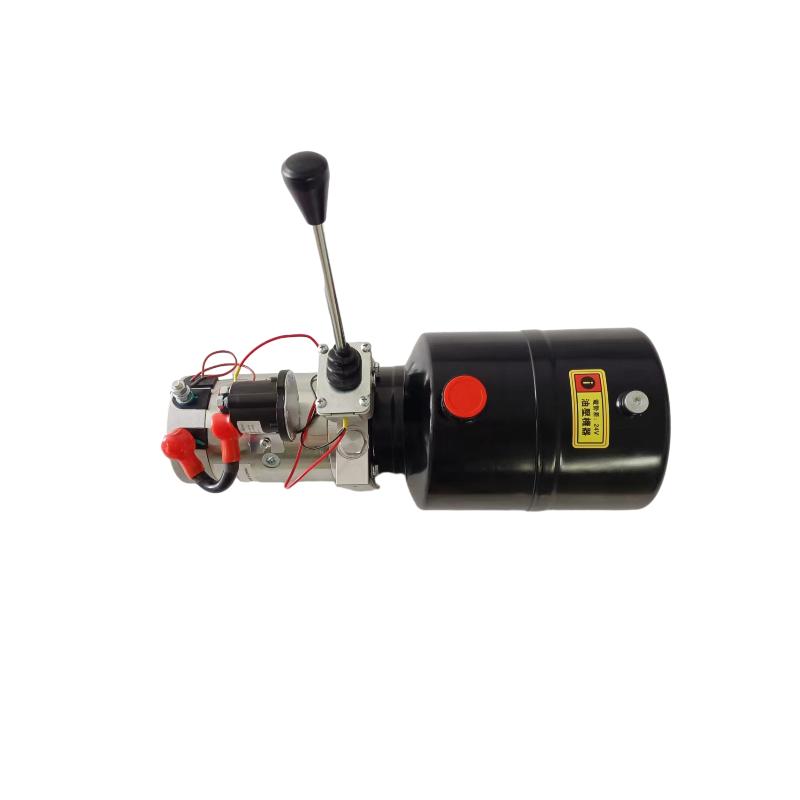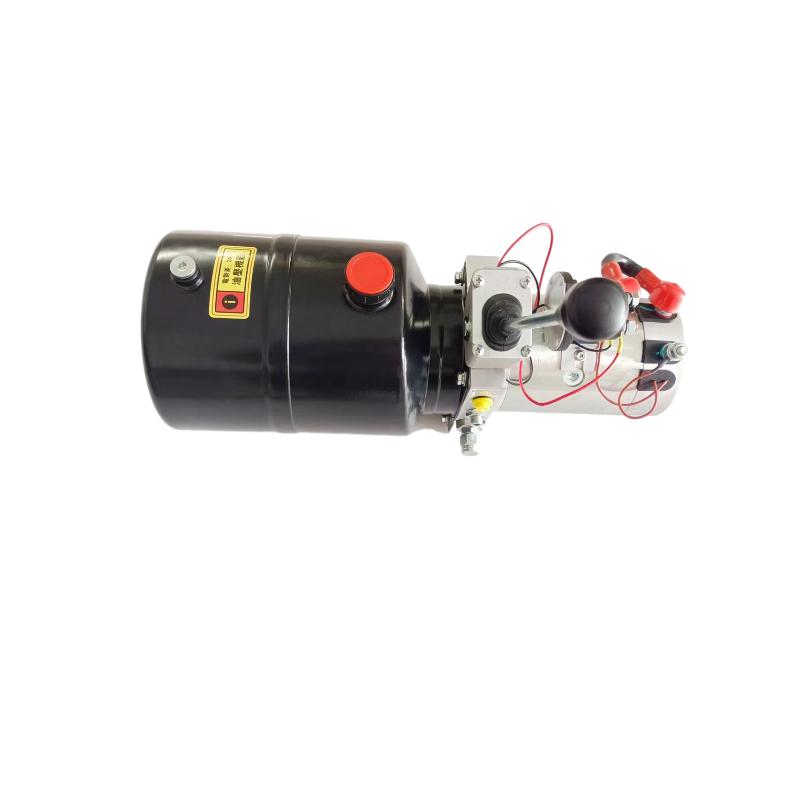Agosti . 12, 2025 01:20 Back to list
High-Performance Fork Lift Power Units - Compact & Efficient
The Core of Industrial Mobility: Understanding Fork lift power units
In the demanding landscape of modern logistics and material handling, the efficiency and reliability of equipment are paramount. At the heart of every high-performing forklift lies its power unit, a critical hydraulic system that dictates lifting, tilting, and steering capabilities. These sophisticated assemblies are engineered to deliver precise power on demand, translating into seamless operation and enhanced productivity. From bustling warehouses to specialized industrial sites, a robust Fork lift power units ensures consistent performance, reduced downtime, and ultimately, a significant return on investment. This article delves into the intricate world of these essential components, exploring their construction, technological advancements, diverse applications, and the rigorous standards that define their quality and longevity.
Understanding the nuanced engineering behind these units is crucial for B2B decision-makers seeking to optimize their fleet operations. We will examine how the integration of advanced components and meticulous manufacturing processes contribute to superior energy efficiency and operational resilience, addressing the evolving needs of various industries, from petrochemical to specialized manufacturing.
Precision Engineering: The Manufacturing Journey of Fork lift power units
The production of high-quality Fork lift power units is a testament to precision engineering, involving a multi-stage manufacturing process designed to ensure durability and optimal performance. It begins with the selection of premium materials, typically high-strength steels and specialized alloys, chosen for their resilience against wear, corrosion, and extreme operating pressures. Key components such as hydraulic pumps, motors, reservoirs, and control valves undergo rigorous treatment. Manufacturing processes include advanced CNC machining for intricate part geometries, ensuring tight tolerances and seamless fit. For instance, pump housings and manifold blocks often start as robust castings or forgings, subsequently refined through precise machining to achieve the necessary internal flow paths and mounting points.
Critical to the integrity of these units is the adherence to stringent inspection standards, including ISO 9001 for quality management and ANSI standards for component dimensions and performance. Each unit undergoes multi-stage testing, including pressure integrity tests, flow rate calibration, and noise emission checks, to guarantee compliance with specified parameters. This meticulous process ensures an extended service life, often exceeding typical industry benchmarks, minimizing maintenance requirements and maximizing operational uptime in demanding environments like petrochemical plants or heavy metallurgy operations. The inherent design focuses on energy efficiency, reducing operational costs, and robust anti-corrosion treatments extend their applicability to challenging climates and industrial settings.

Figure 1: Depiction of a precision-engineered component for Fork lift power units.
Technical Superiority: Key Parameters and Performance Insights
Understanding the technical specifications of Fork lift power units is crucial for selecting the right model for specific operational requirements. These units are characterized by several key parameters that directly influence their performance, efficiency, and suitability for various applications. For instance, hydraulic efficiency, often measured in terms of power output versus power input, is a critical metric for evaluating energy consumption. The power density, which refers to the power output per unit of volume or weight, determines how compact yet powerful a unit can be, an important consideration for space-constrained forklift designs. Advanced units often feature closed-loop control systems, which provide precise feedback and adjustments, leading to smoother and more responsive operations.
The table below outlines common specifications that demonstrate the advanced capabilities and diverse configurations available in modern power units. These data points allow for a direct comparison, aiding B2B clients in making informed decisions based on their fleet's needs and operational demands. This commitment to transparent data reflects the industry's move towards higher performance and greater accountability, critical factors for long-term operational success in sectors ranging from logistics to heavy manufacturing.
| Parameter | Range/Value | Benefit/Impact |
|---|---|---|
| Motor Voltage (V DC) | 12V - 48V | Compatibility with various forklift electrical systems. |
| Motor Power (kW) | 0.8 kW - 7.5 kW | Determines lifting capacity and speed. |
| Operating Pressure (MPa) | 16 MPa - 25 MPa | Indicates maximum load handling capability. |
| Flow Rate (LPM) | 5 LPM - 25 LPM | Affects speed of hydraulic functions (lift/tilt). |
| Reservoir Capacity (Liters) | 4L - 25L | Ensures sufficient hydraulic fluid for continuous operation and cooling. |
| Valve Type | Solenoid, Manual | Controls precision and automation of movements. |
| Noise Level (dB) | Typically < 75 dB | Contributes to a quieter and safer work environment. |
| IP Protection Class | IP65 - IP67 | Resistance to dust and water ingress, crucial for harsh environments. |

Figure 2: Advanced internal components of a Fork lift power units, showcasing precision.
Versatile Applications and Industry Trends
The adaptability of Fork lift power units makes them indispensable across a wide spectrum of industries. In manufacturing, they enable precise material positioning on assembly lines and efficient loading/unloading of raw materials. In large-scale warehousing and logistics, these units power fleets of forklifts responsible for rapid stock movement, contributing directly to supply chain fluidity. Specialized applications extend to the petrochemical industry, where explosion-proof or corrosion-resistant units are essential, and to metallurgy, where heavy-duty power units are required for handling massive loads in extreme temperatures. Given their critical role, these units are designed to operate reliably under continuous heavy loads and demanding environmental conditions.
Current industry trends highlight a strong focus on energy efficiency, with increasing demand for variable speed drives and regenerative braking systems within Fork lift power units to minimize power consumption. There's also a growing emphasis on smart integration, leveraging IoT sensors for real-time diagnostics and predictive maintenance, enhancing operational foresight. Furthermore, the push towards electrification and automation in material handling equipment is driving innovation in more compact, high-power-density designs. Manufacturers are also increasingly offering highly customized solutions, tailoring reservoir sizes, valve configurations, and control mechanisms to meet unique operational challenges, moving beyond off-the-shelf components to deliver optimized performance.

Figure 3: A Fork lift power units in a typical industrial application, highlighting its robust design.
Ensuring Trust and Reliability: Quality Assurance and Support
In the B2B sector, trust is built on proven reliability and comprehensive support. Manufacturers of Fork lift power units demonstrate authoritativeness through adherence to global standards such as ISO and in some cases, FDA compliance for specialized applications, alongside partnerships with leading forklift brands. Our commitment to excellence is reflected in our robust quality control protocols and our extensive service history, spanning over a decade in the hydraulic components industry. Each unit undergoes rigorous final testing, simulating real-world operational loads to ensure peak performance and longevity. This extensive testing process, backed by documented test data and performance charts, provides clients with undeniable proof of product capability and reliability.
Our dedication to customer satisfaction extends beyond product delivery. We provide detailed information regarding our efficient delivery cycles, ensuring minimal disruption to your operations. Furthermore, our comprehensive quality assurance policies and clear warranty commitments underpin our promise of long-term product performance. Our responsive customer support team is always ready to assist, from initial consultation and customized solution design to post-sales technical assistance and troubleshooting. This holistic approach ensures that every client receives not just a product, but a complete solution backed by expertise and unwavering support, fostering lasting partnerships.
Frequently Asked Questions (FAQ)
Q1: What is the typical lifespan of a Fork lift power units?
A1: The lifespan of a high-quality unit can vary based on usage intensity and maintenance. However, with proper maintenance and operation within specified parameters, our units are designed for extended service lives, typically exceeding 10,000 operational hours, providing years of reliable performance. Regular hydraulic fluid changes and filter replacements are key to maximizing longevity.
Q2: Can these power units be customized for specific forklift models or applications?
A2: Absolutely. We specialize in providing customized solutions. Our engineering team works closely with clients to tailor these units to specific forklift brands, models, and unique application requirements, including voltage, pressure, flow rate, reservoir size, and valve configurations. This ensures optimal integration and performance for your specific needs.
Q3: What are the key advantages of your Fork lift power units in terms of energy efficiency?
A3: Our power units are engineered with a focus on energy efficiency. This is achieved through optimized pump designs, high-efficiency motors, and, in some models, advanced control systems that minimize energy waste. This results in reduced power consumption, lower operational costs, and extended battery life for electric forklifts, aligning with modern industrial demands for sustainability.
Conclusion
The continuous evolution of Fork lift power units underscores their pivotal role in enhancing the efficiency, safety, and operational capabilities of industrial material handling equipment. By combining robust manufacturing processes, advanced technical specifications, and a commitment to customer-centric solutions, these power units represent a significant investment in maximizing productivity and minimizing long-term operational costs. As industries continue to seek more sustainable and intelligent solutions, the development of these hydraulic heartbeats will remain at the forefront of innovation, driving the future of logistics and manufacturing.
References
- Hydraulic Institute. Hydraulic Systems Fundamentals: Principles and Applications. New York, NY: Hydraulic Institute Press.
- ISO. Quality Management Systems – Requirements (ISO 9001). International Organization for Standardization.
- National Fluid Power Association. Fluid Power Standards and Industry Best Practices. NFPA Technical Reports.
-
1.5 Ton Lifting Cylinder 70/82-40-290-535 - Hebei Shenghan | Precision Durable Customizable
NewsAug.12,2025
-
High-Performance Fork Lift Power Units - Compact & Efficient
NewsAug.12,2025
-
1.5 Ton Lifting Cylinder - Hebei Shenghan|Precision Engineering&Heavy-Duty Applications
NewsAug.11,2025
-
1.5 Ton Lifting Cylinder 70/82-40-290-535 - Hebei Shenghan|Heavy-Duty Lifting, Precision Engineering
NewsAug.11,2025
-
High-Performance Forklift Power Units | Durable & Efficient
NewsAug.11,2025
-
1.5 Ton Lifting Cylinder 70/82-40-290-535-Hebei Shenghan Hydraulic|Precision Engineering, Industrial Lifting
NewsAug.11,2025
